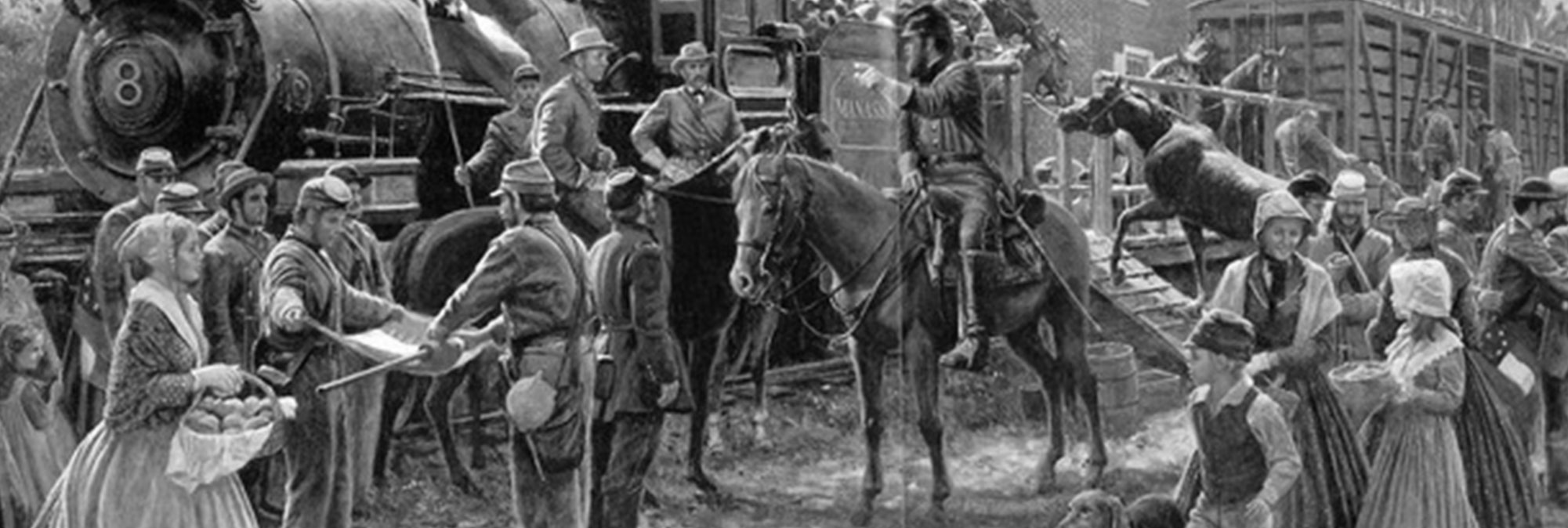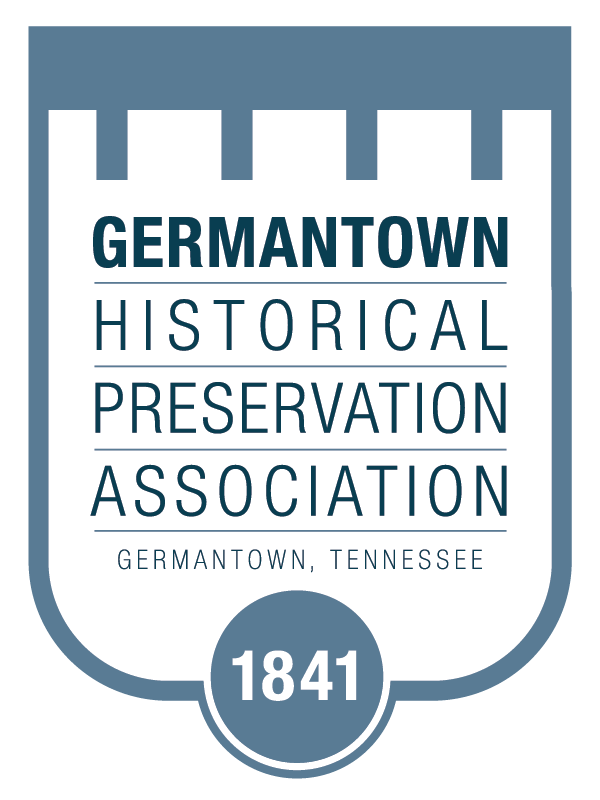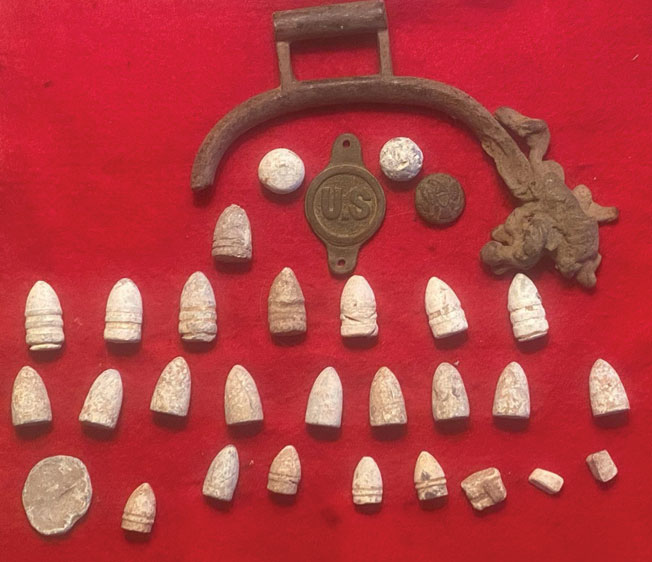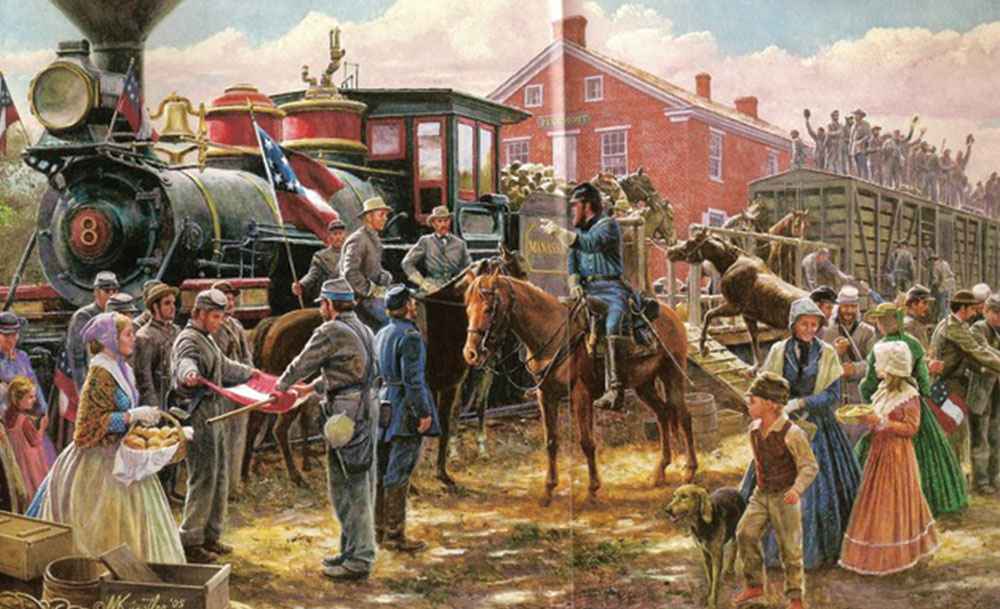
1861
By Lee Millar
On June 8, 1861, the people of Tennessee voted to officially withdraw from the Union and establish an alliance with the Confederacy, by a vote of 104,913 to 47,238. Celebrations occurred everywhere in Shelby County, including Germantown. But the city had already been making preparations for potential conflict and invasion by the North.
On April 20, eight days after Fort Sumter, the men around Germantown met and formed a Committee of Safety, led by citizens Dr. Cornelius as chairman, George Shepherd as secretary, Colonel George Trueheart (lawyer), Joseph Brooks (planter), James Kimbrough (planter), Dr. John T. Harris, O. M. Alsup, M. Rogers, Thomas Coles (merchant), and Reverend Joshua L. Cross. They resolved “that a military company of the citizens of Germantown and vicinity is forthwith formed for the protection of our friends, to be called the “Home Guard.”
Soon the newly renamed “Secession Guards” were recruited with Germantown as its base, drawing recruits from as far afield as Mississippi, and enrolling over 100 men.
A second company was soon authorized but was delayed since the neighboring town of Collierville to the east raised an additional company, which would form the nucleus of the unit known as the “Wigfall Grays.”
Germantown’s leading mothers and spouses soon formed a Ladies Auxiliary and devoted themselves to sewing uniforms for the new soldiers and raising funds for equipment.
“Instantaneously, the prominent ladies of the town and countryside exhibited uncharacteristic behavior for Southern ladies. They created their own organization, elected officers, set about and organized activity, and published their names in the papers. Although Southern women elsewhere made this same transition, Germantown’s ladies did so with greater promptness than most.”
By May 15, 1861, the second company of area men had formed and was nicknamed the “Shelby Grays”. These men, plus eight other companies and the Wigfall Grays of Collierville, were sworn into Confederate service as the 4th Tennessee Infantry. A great ‘enlistment’ ceremony was held at the Germantown Depot with music, fanfare, and a picnic. A regimental flag, sewn by the ladies, was grandly presented to the troops. The new regiment then boarded a Memphis & Charleston Railroad train to Memphis and thereupon took steamboats up the Mississippi River to Fort Wright at Randolph, TN for training.
By the end of the month, the Secession Guards entrained to Jackson, TN, where they were sworn in as part of the 13th Tennessee Infantry. At least 33 of Germantown’s free Blacks and slaves also served with the 13th.
Other Germantown men joined the Confederate cavalry, particularly the 3rd Tennessee Cavalry (Forrest’s) and the 7th Tennessee Cavalry, also under General N. B. Forrest.
Two of the town’s doctors, Dr. Robert H. McKay and Dr. Leonidus Richmond, became surgeons for the Confederate Army.
The Memphis & Charleston Railroad, the vital economic and social link from Germantown to the rest of the world was likewise pressed into the service of the Confederacy.
Union Bugle Mouthpiece, Found at Baptist Chapel Site
Germantown relic hunter, Sid Witherington, found these artifacts on the site of the Germantown Baptist Church. Above you will find the following: Melted brass Cavalry Stirrup, Eagle Uniform Button, U.S. Bit Boss Rosette, & Bullets- 2 .69 musket balls, 1 Burnside, 7 Sharps, 9 Cosmopolitan, 5 .44 Colt Pistol, 1 Flattened bullet (poker chip), & 3 Cut bullets
The celebratory scene in Germantown was much the same as in this painting. The men of the newly-organized 4th Tenn Infantry, CSA, boarded the train at Germantown station to head to training camp.



